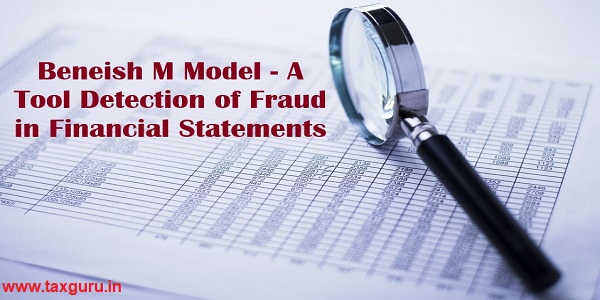Today’s Trend – ‘Auditor is sole responsible for creating and managing the fraud due to non-reporting of fraud in its report’
Auditor Feeling- Fraud is intentionally done by the management and TCWG and there is numerous inherent limitations in the Audit. Bhai kya Kru
So, Beneish M model can be used to detect whether a company has manipulated its earnings.
Q – What is Beneish M Model?
A- Beneish Model is a statistical model created by Professor Messod D. It is a model that studies the trend of the organization through various ratios. This model is based on eight financial ratios.
Q- How does this work?
A- The Formula is: -4.84 + 0.92*DSRI + 0.528*GMI + 0.404*AQI + 0.892*SGI + 0.115*DEPI – 0.172*SGAI + 4.679*TATA – 0.327*LVGI (note)
(Note: DSRI- Days Sales in receivable Index, GMI – Gross Margin Index, AQI- Asset Quality Index, SGI- Sales Growth Index, DEPI- Depreciation Index, SGAI- Sales, Genera, Administrative Index, TATA- Total assets, LVGI- Leverage Index)
Q-How to ascertain manipulation?
A-When the resultant is greater than -1.78 then the chances of manipulation is higher, less that -1.78 indicates less manipulation.
The eight ratios are:
1. Days Sales in Receivables Index – (Receivables / Sales * no of days) this helps in recognizing any unreasonable change in the debtors compared to the previous years.
2. Gross Margin Index– (Sales- cost of sales/ sales) If Gross Margin Index is greater than 1, then this indicates organization’s gross margin has decreased and may be manipulative.
3. Asset Quality Index-{1-(current Assets + Net Fixed Assets/ Total Assets)}: This indicates the unnecessary costs that are capitalised which are not be capitalised.
4. Sales Growth Index: (Sales of the current year/ sales of the previous year) Growth in sales as such does not indicate manipulation, however, companies with high growth rates find themselves highly motivated deceive when the trend reverses.
5. Depreciation Index: (Depreciation/ Depreciation + Net assets): Depreciation index lower than 1 shows an inappropriate increase in the useful life of fixed assets.
6. SGA Index: (Sales, General, Administrative Expense/ Sales): This reflects the manipulation of expenses like sales, general and administrative with sales ratio.
7. Leverage Index: (Total Debts/ total Assets): If the ratio is greater than 1, usually indicates new debt or increase in debts. Unusual Increase in debts hints manipulation.
8. Accruals to total assets: (Change in WC – Change in Cash + Change in Income Tax payable + Change in Current portion of Long Term Debt- Depreciation/ Total Assets=TATA) Higher the TATA higher the chances of manipulation.
*****
For Further Clarification please contact on below address:
Tarun Sharma (CA Final) | E-mail-sharmatarun1610@gmail.com







Great job buddy .
Model will be helpful to find out and stop fraud.
Awesome